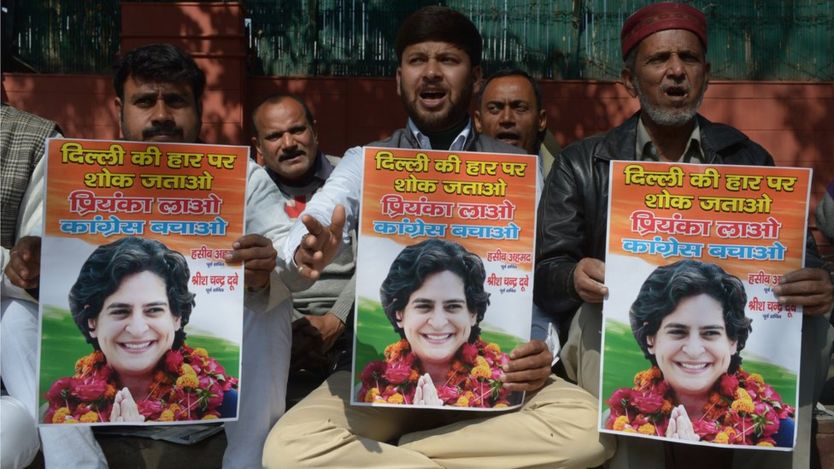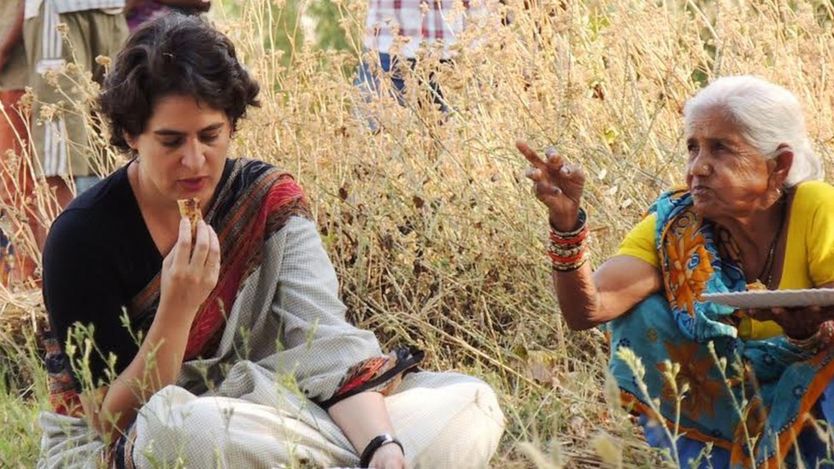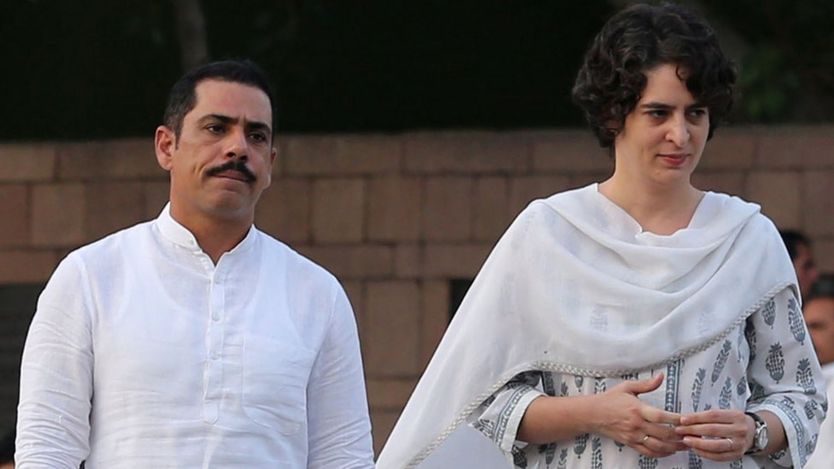Can Priyanka Gandhi revive Indian Congress party's fortunes?
- 2 hours ago
- India
 AFP
AFP
The Congress party, which has ruled India for most part since the country gained independence in 1947, has been in a state of rapid decline in recent years.
Now with elections in the politically key state of Uttar Pradesh just a few weeks away, the "grand old party" of India has allied with the regional Samajwadi Party which currently heads the state government, and run by the powerful but feuding Yadav family.
Interestingly, the credit for this strategic alliance is being credited to Priyanka Gandhi, sister of Congress leader Rahul Gandhi.
'Relevant dynasty'
Many in the party have fancied a larger role for Ms Gandhi for years, but this is perhaps the first time her backroom negotiating skills are being acknowledged publicly by the party.
In the family stronghold of Rae Bareli district in Uttar Pradesh, Ms Gandhi is held in high regard. "If anyone in India can revive the Congress and ensure the Nehru-Gandhi dynasty remains relevant, it's Priyanka," declares Bhure Lal, 43-year-old farmer and Congress party loyalist.
Rae Bareli is represented in the parliament by her mother Sonia Gandhi, Congress party chief and widow of former PM Rajiv Gandhi, and over the past 16 years, Ms Gandhi has campaigned extensively for her mother and her brother Rahul Gandhi in the nearby constituency of Amethi.
 AFP
AFP
The Gandhi family has enjoyed cult status in these underdeveloped areas from where her father Rajeev and grandmother, former PM Indira Gandhi, had also won several elections.
In the 2014 elections, covering village after village in the blistering heat of northern India, Ms Gandhi was a hit with the masses, often sharing her home-cooked meals with people.
Setbacks
On the campaign trail, she is often seen skipping her security cordon to talk to supporters, giving jitters to the security men considering both her father and grandmother were assassinated.
"One day, after a long day of election campaign, she returned to her makeshift home in Rae Bareli and leaving her security men bewildered, decided to take her children out on a rickshaw ride in the town," recalls veteran journalist Umesh Raghuvanshi.
In recent years, the Congress has suffered several electoral setbacks - the party was reduced from 206 to 44 seats in the 543-member parliament in the 2014 general elections and also lost in the crucial states of Assam, Kerala and West Bengal, where both Rahul and the Italian-born Sonia had campaigned aggressively.
 AFP
AFP
This has led to demands within the party to bring Ms Gandhi, perceived by many to be more popular than her bachelor brother, to the forefront.
But the 44-year-old mother-of-two has been reluctant to take centre stage and prefers to work only in the family bastions.
Mood of voters
In Amethi, from where her brother has been an MP since 2004, Ms Gandhi has kept a close tab on the mood of the voters.
During the 2014 polls, when Mr Gandhi was busy campaigning for Congress candidates elsewhere, it was she who ensured the defeat of his opponent Smriti Irani, television actress and now a cabinet minister.
"Had it not been for her, Rahul Gandhi would have lost. Sensing her brother was losing popularity, Priyanka devoted extra time to the constituency, reminding people of the sacrifices her family had made for the country. Rahul won but his victory margin decreased considerably and that was embarrassing," says Lal Bahadur Khan, a Congress supporter in Amethi.
Those who have worked closely with her praise the easy connections she makes with the masses.
 AFP
AFP
"Her biggest asset is the instant connect she makes with the voter and her fluency in Hindi. She makes people feel as if they are interacting with the person next door," says Sanjay Singh, a former Amethi royal and MP.
Ms Gandhi had previously displayed no political ambition and always endorsed her bother as the one who has political insight, dedication and conviction to run the party.
'Active politics'
"I don't think I would be able to have a normal quiet life if I was in active politics. When I am not helping my mother or brother in their constituencies, I am making cupcakes for my two kids and buying groceries," she had told the Outlook magazine in a rare interview.
But now, she has been officially listed as one of the political campaigners for the Congress party this election.
 VINAY DWIVEDI
VINAY DWIVEDI
And although Ms Gandhi has insisted that she has no political ambitions, many are unconvinced that her family will stay away from politics.
Her flashy and flamboyant husband Robert Vadra has hinted in the past that he was not averse to joining politics.
'Witch hunt'
He has been accused of alleged wrongdoings in his real estate business in the states of Haryana and Rajasthan and is being investigated by the BJP government in Haryana.
Mr Vadra and the Gandhis have denied the allegations and accused the BJP of a "political witch hunt".
Some, however, say it will take much more than the charms of Ms Gandhi to stall the Congress party's slide. They also wonder if she has the political acumen and flair to lead the party.
 AFP
AFP
A long-time Congress worker and local party administrator in Rae Bareli, Ram Sevak Chaudhary, says she may be the "best bet" to revive the floundering party, but "she is mostly surrounded by sycophants".
"When we lost the 2012 state polls, she asked me the reasons for the loss. I bluntly told her that the faulty candidate selection by her team was one of the reasons. She looked visibly upset and I was thrown out of the local organisational set-up the following month," he says.
'Never too late'
Critics also say that with the Congress losing ground fast, the party must take a call on launching Ms Gandhi before it's too late.
But between the raging debate of "will she or won't she" lies the traumatic experience of a young girl who saw her father and grandmother being killed while on political duty.
So despite being the biggest crowd-puller amongst the Gandhis currently, it may be a completely emotional decision if she ever decided to join politics, says analyst Rasheed Kidwai.
"Sonia Gandhi is ageing and it's clear that she wants to pass on the mantle to Rahul Gandhi who appears to be a bit unsure. Even Priyanka hasn't delivered phenomenally in the Gandhi strongholds of late, but who knows… It is never too late in politics."

